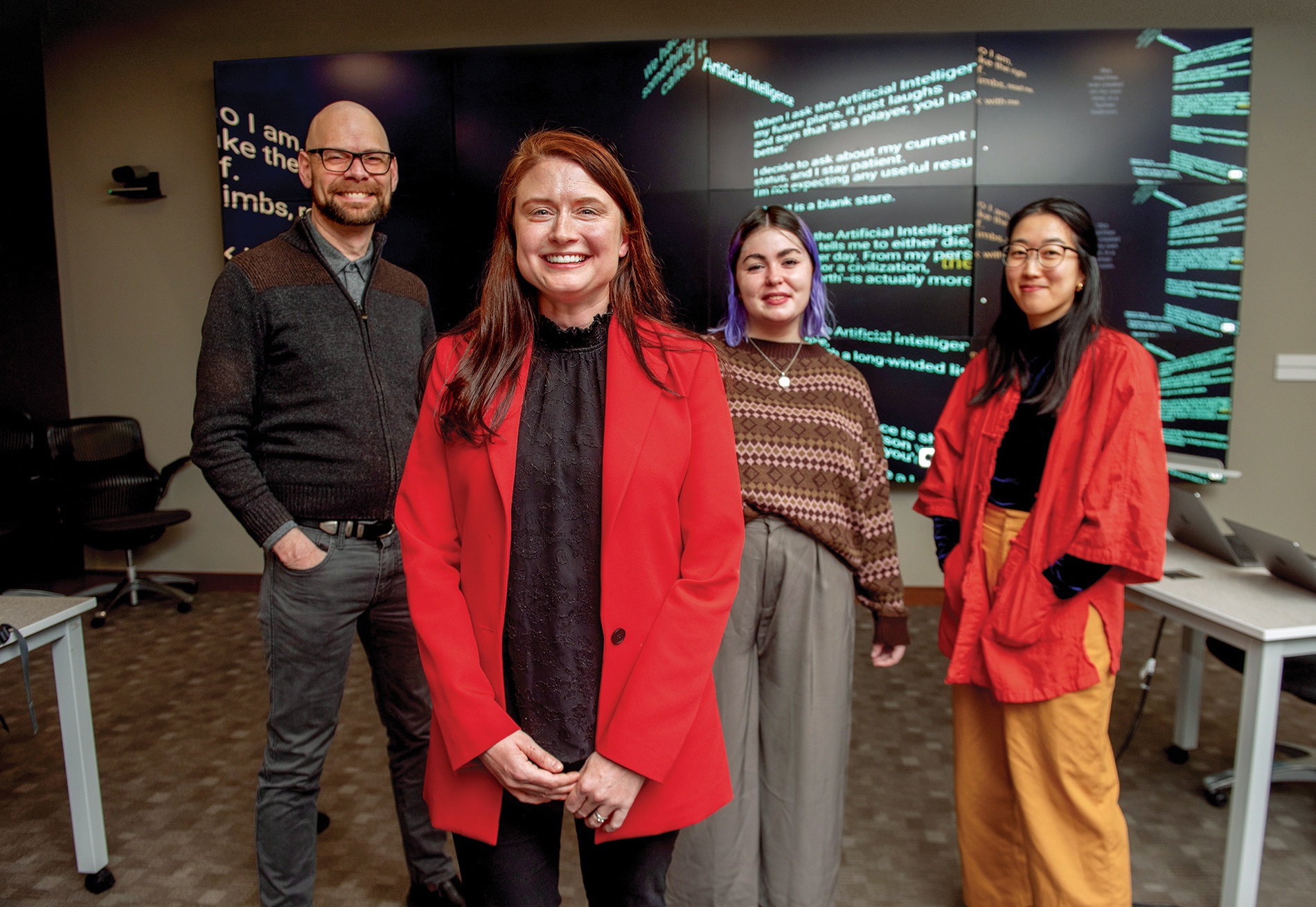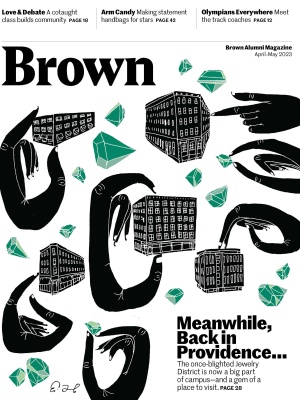
Preserving Poetry, Byte by Byte
At the Brown Library, archivists seek to protect innovative digital art.
How do you write an endless poem? It’s a question that some writers have taken seriously, Lillian-Yvonne Bertram among them. Bertram, who employs computational technologies to expand poetry’s limits, is one of five practitioners who will work with Brown Library staff on a new project aimed at preserving experimental digital artworks.
This spring, the Library was awarded a $20,000 grant from the National Endowment for the Arts to support the project, titled “New Frameworks to Preserve and Publish Born-Digital Art.” The endeavor is helmed by Ashley Champagne, director of Brown’s Center for Digital Scholarship. Champagne and her team are developing methods for safeguarding works like Bertram’s, which, because they originated as digital objects or live on the internet, are at risk of becoming inaccessible once our current platforms become outdated. Think about what happened to the floppy disk; the web as it now exists might one day meet a similar fate, turned over in favor of an updated system.
Artists have harnessed the internet as a medium for expression and interrogation since its earliest days. Bertram’s “Forever Gwen Brooks,” for example, is a dynamic, ever-changing, potentially “endless” poem, housed on a website. The piece reworks the final poem of Gwendolyn Brooks’s 1969 book RIOT, swapping new words into the poem from elsewhere in the book every time a viewer refreshes the webpage. Designed to exist in constant digital flux, Bertram’s poem presents “a difficult preservation challenge,” Champagne says.
The grant team will work with the five selected artists to determine how to create versions of their art that can be stored long term. According to Champagne, “the end goal is to produce five models for the preservation of digital literary artworks that are really pushing the boundaries of the field.” After the project concludes, Champagne hopes that other artists and organizations seeking to protect at-risk digital art will be able to build on the methods developed at Brown.
Part of the challenge of preserving a piece of digital art is that it relies on multiple levels of technology in order to function: the code the artist wrote, the web browser or software necessary to display the art, the computer’s own operating system, and so on. As technology evolves, a particular element within this computational “stack” that was used by an artist—a piece of Adobe software, say—may become obsolete, jeopardizing an entire artwork. For preservationists, Champagne says, the current solution to this problem is a process known as “containerization,” a software deployment process used to bundle the code and all the files and libraries that make up the born-digital or born-computational artwork so that it can run on any infrastructure. She enlisted the staff of Brown’s Center for Computation and Visualization to provide technical expertise in this part of the project.
Andrew Majcher, a digital archivist involved in the grant, says that once a container has been created for a piece of digital art, the files can be moved between computers and accessed even if some of the original technology is defunct. “We’re able to then just go into the container, open it up, and it has the software, it has the object, and we can run it kind of in the environment that it looked like when it was created,” he explains.
In addition to Bertram, the artists involved in this preservation effort are Todd Anderson ’17 MFA, David (Jhave) Johnston, Allison Parrish, and Judd Morrissey ’00 MFA. All five could be called digital language artists: each works with poetic forms, exploring the place of language in our networked world. Both Parrish and Johnston have created pieces using text generated by artificial intelligence. Gathering language-oriented artists was a deliberate choice, Champagne says, given that Brown’s Program in Literary Arts has been a hub for experimental digital projects since the early 1990s.
John Cayley, professor of Literary Arts and faculty lead for the grant, says that while integrating computer science with literary endeavors is not as novel a practice as it once was, previous grants intending to support this work have had limited benefits for artists.
“A database is made and then the person who maintains that database leaves whatever institution it is, and then the database is never used again,” says Cayley, a practicing language artist working with computational tools who was awarded an honorary degree from Brown in 2012. He believes that the Library’s current project is focused enough to be able to make a lasting impact in the effort to protect endangered digital art. “I am quietly hopeful that this will actually lead to something,” he says. “It’s giving itself the right sort of problems.”





